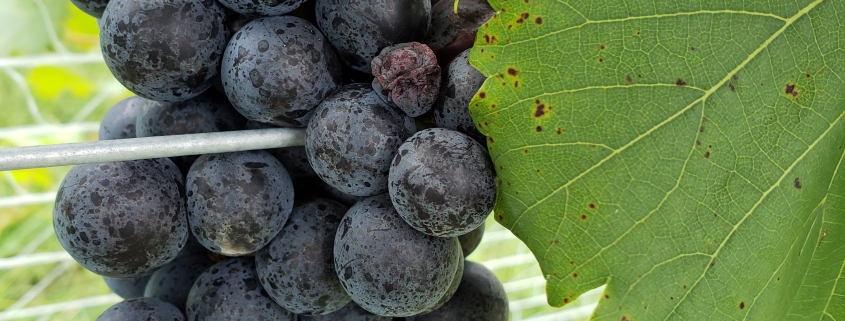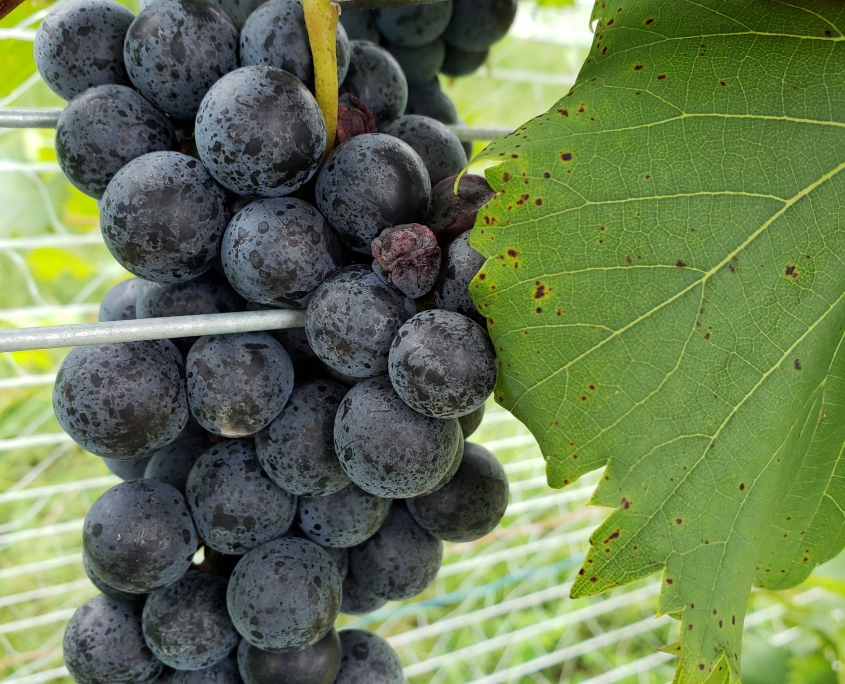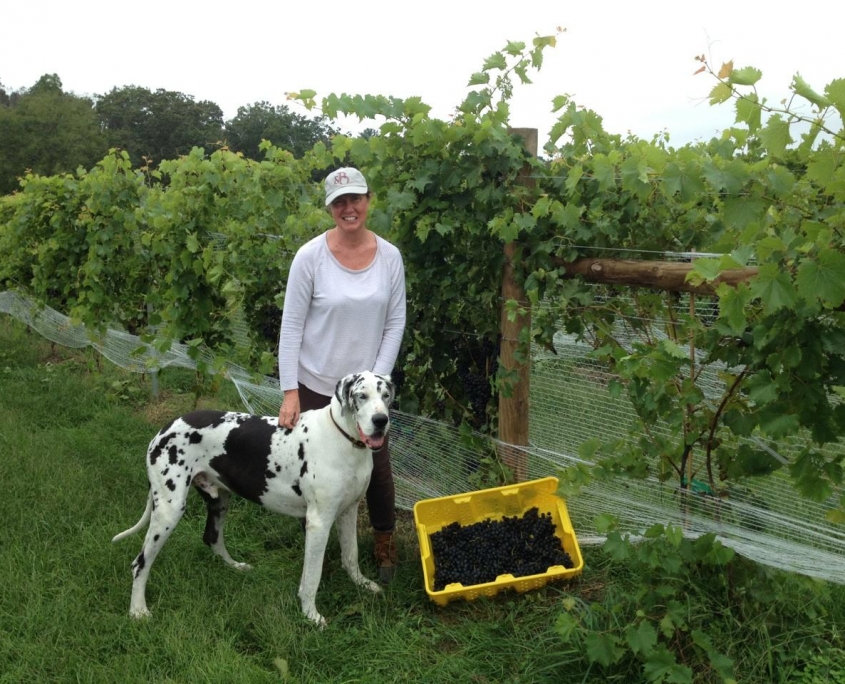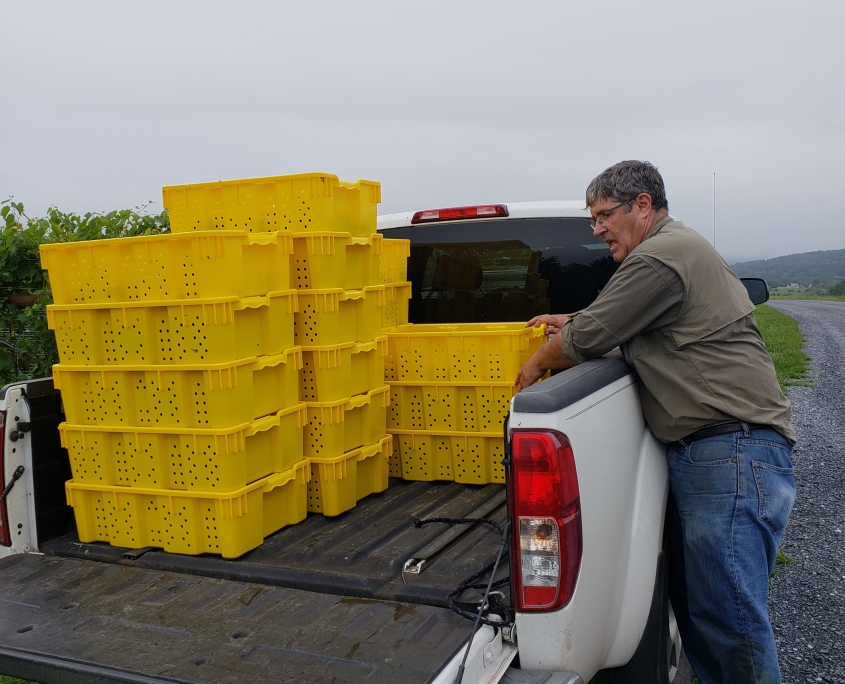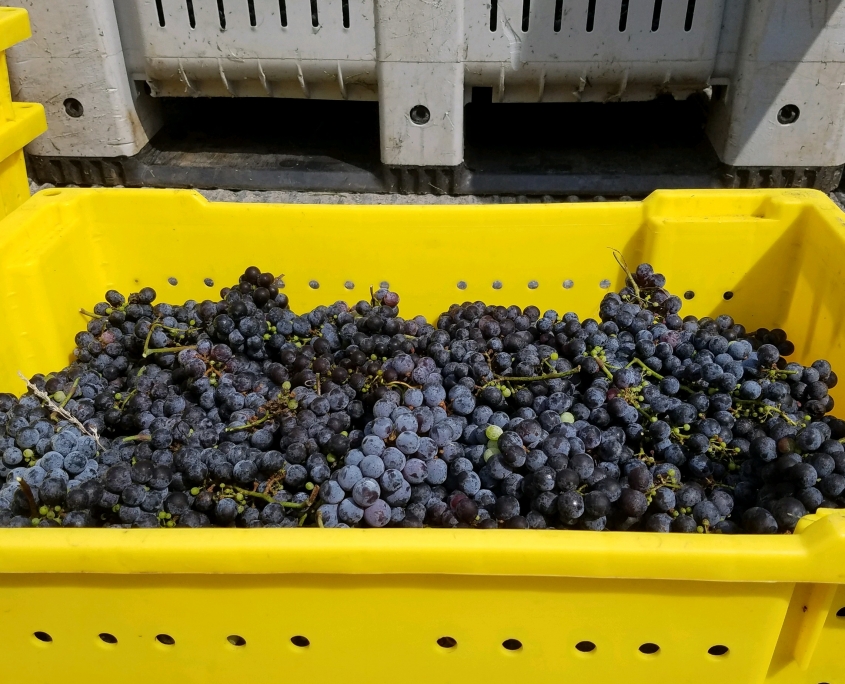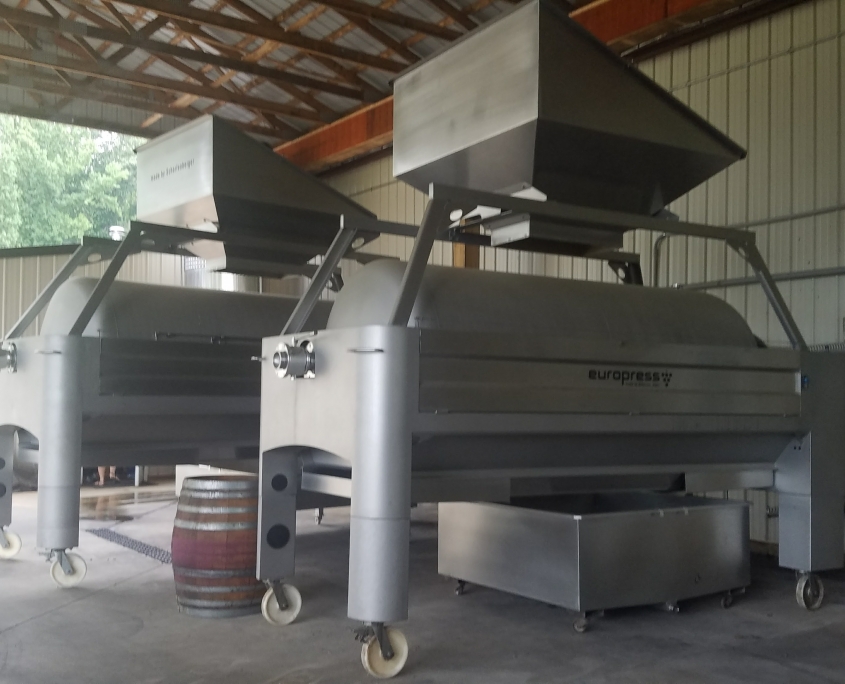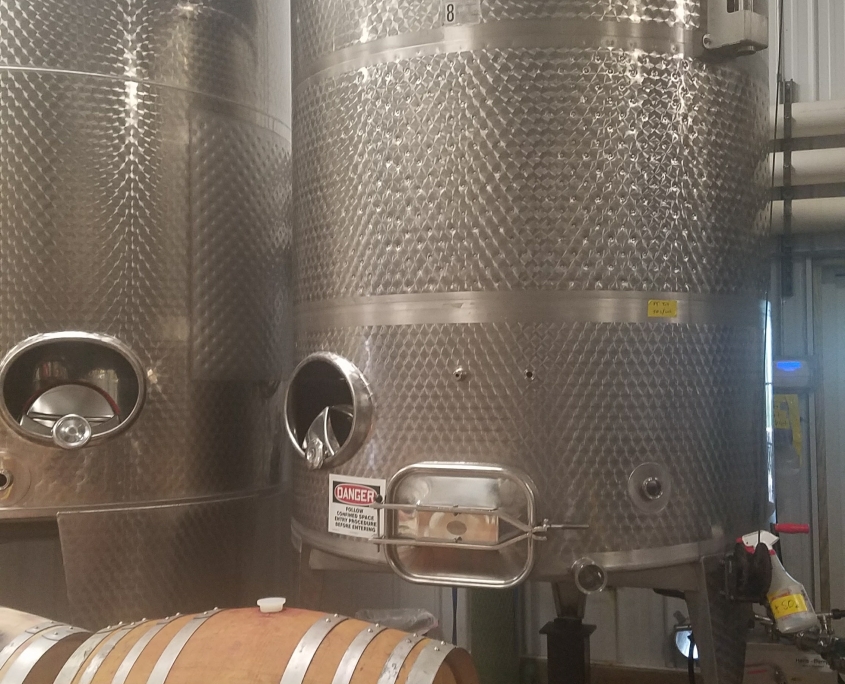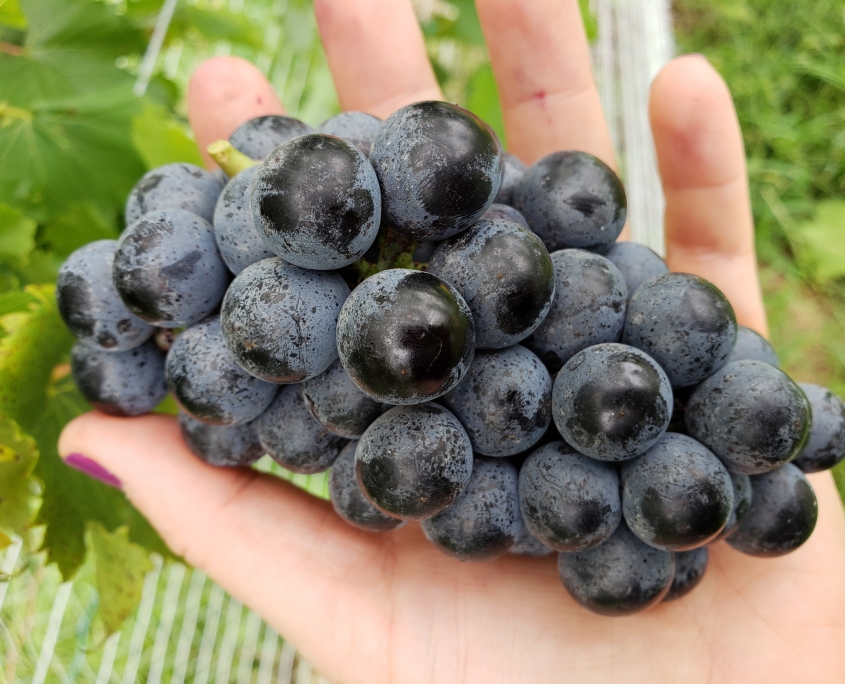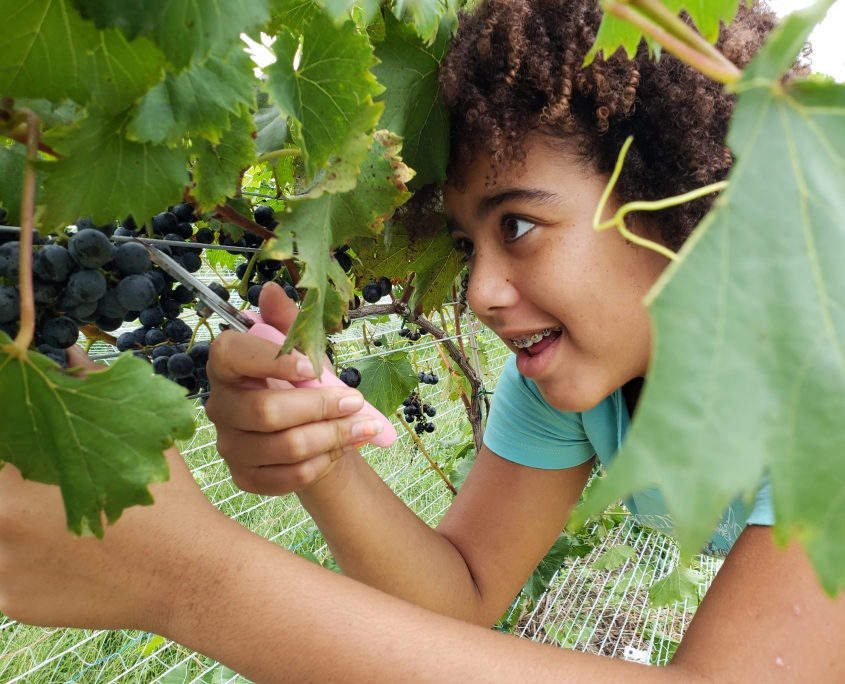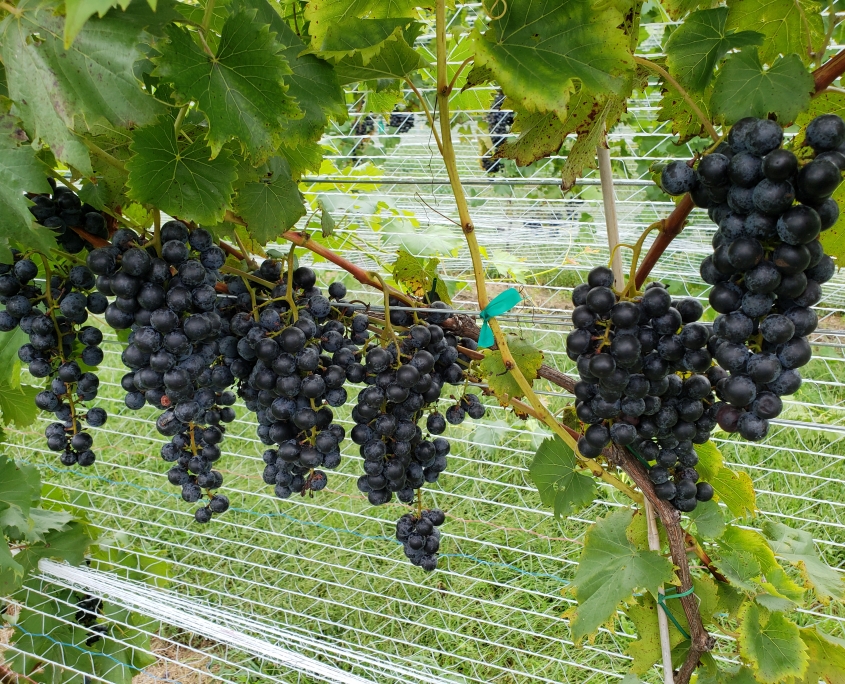Harvest Time!
I know at least some of you saw the harvesting fun that we had over the past few weeks. For us folks in the wine industry, the harvest is the culmination of a year’s worth of hard work pruning and training vines, examining and treating any pests, wrapping rows in netting to protect the grapes from becoming meals, and carefully watching the sweetening process to make sure grapes are harvested at exactly the right time. This year, Mother Nature had a different harvesting date in mind, and when there was a prediction of 20 inches of rain coming, we decided to rush the harvest on our grapes even though the brix levels weren’t quite as high as we wanted.
If you’re like me, you are more than a little curious about what happens to the grapes when they leave the farm here at Six Penny. That actually depends on which grape you are following!
The first thing that happens to all of the grapes is that they get sorted. The best way to get the bad grapes out of the cluster is by shaking them lightly. This movement dislodges any grapes that might be damaged. Grapes are then placed on a table and examined to pick out any other damaged or underripe fruit.
At this stage, some of our chambourcin grapes will be put in loose layers and placed in a special drying barn; this process allows them to concentrate their sugars to create the deliciously sweet Port style wine that is a holiday favorite.
After sorting, the grapes are put into a machine that crushes, destems, and presses the juice out of the grapes. The grapes may be separated from their skins depending on if they are destined for white or red wine. For some red wines, the stems and seeds will be included in the next step of the process to increase the tannins and structure of the wine.
Fermentation takes place in large stainless steel tanks that open at the top and have valves in the bottom. This allows for the juice to be piped over itself at regular intervals to stir things around.
After fermentation is complete, some wines are bottled immediately and some are transferred to oak barrels to age for up to several years before bottling.
I’m still learning the wine-making process, so forgive me for my lack of detail and bear with this old dog as I learn my newest tricks!

